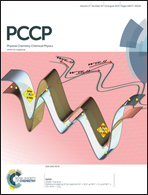Morphology controllable nano-sheet polypyrrole–graphene composites for high-rate supercapacitor†
Abstract
Polypyrrole is a promising candidate for supercapacitor electrode materials due to its high capacitance and low cost. However, the major bottlenecks restricting its application are its poor rate capability and cycling stability. Herein, we control the morphology of polypyrrole–graphene composites by adjusting the graphene content, causing the typical “cauliflower” morphology of polypyrrole to gradually turn into the homogeneous nano-sheet morphology of these composites. The composites consequently exhibit good thermal stability, high protonation level (37.4%), high electronic conductivity (625.3 S m−1), and fast relaxation time (0.22 s). These remarkable characteristics afford a high capacitance of 255.7 F g−1 at 0.2 A g−1, still retaining a capacitance of 199.6 F g−1 at 25.6 A g−1. In addition, high capacitance retention of up to 93% is observed after 1000 cycles testing at different current densities of 0.2, 1.6, 6.4, 12.8 and 25.6 A g−1, indicating high stability. The composite’s excellent electrochemical performance is mainly attributed to its nano-sheet structure and high electronic conductivity, providing unobstructed pathways for the fast diffusion and exchange of ions/electrons.


 Please wait while we load your content...
Please wait while we load your content...